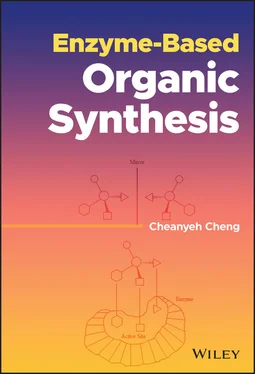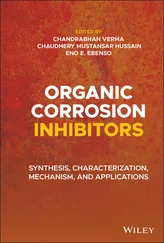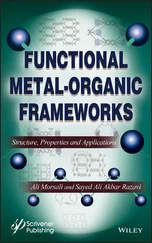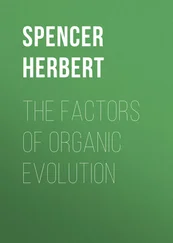Cheanyeh Cheng - Enzyme-Based Organic Synthesis
Здесь есть возможность читать онлайн «Cheanyeh Cheng - Enzyme-Based Organic Synthesis» — ознакомительный отрывок электронной книги совершенно бесплатно, а после прочтения отрывка купить полную версию. В некоторых случаях можно слушать аудио, скачать через торрент в формате fb2 и присутствует краткое содержание. Жанр: unrecognised, на английском языке. Описание произведения, (предисловие) а так же отзывы посетителей доступны на портале библиотеки ЛибКат.
- Название:Enzyme-Based Organic Synthesis
- Автор:
- Жанр:
- Год:неизвестен
- ISBN:нет данных
- Рейтинг книги:3 / 5. Голосов: 1
-
Избранное:Добавить в избранное
- Отзывы:
-
Ваша оценка:
- 60
- 1
- 2
- 3
- 4
- 5
Enzyme-Based Organic Synthesis: краткое содержание, описание и аннотация
Предлагаем к чтению аннотацию, описание, краткое содержание или предисловие (зависит от того, что написал сам автор книги «Enzyme-Based Organic Synthesis»). Если вы не нашли необходимую информацию о книге — напишите в комментариях, мы постараемся отыскать её.
An insightful exploration of an increasingly popular technique in organic chemistry Enzyme-Based Organic Synthesis
Enzyme-Based Organic Synthesis
Enzyme-Based Organic Synthesis
Enzyme-Based Organic Synthesis — читать онлайн ознакомительный отрывок
Ниже представлен текст книги, разбитый по страницам. Система сохранения места последней прочитанной страницы, позволяет с удобством читать онлайн бесплатно книгу «Enzyme-Based Organic Synthesis», без необходимости каждый раз заново искать на чём Вы остановились. Поставьте закладку, и сможете в любой момент перейти на страницу, на которой закончили чтение.
Интервал:
Закладка:
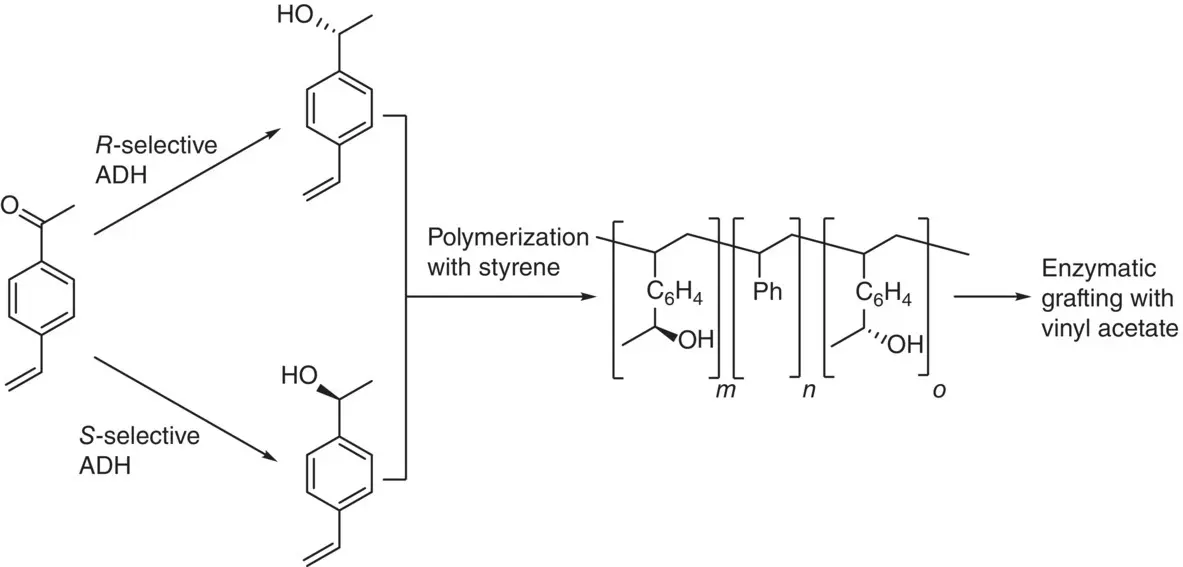
Scheme 2.39 Asymmetric reduction of ketones and polymerization of the optically pure monomers for application in material chemistry.
2.2.2 Reduction of C═C Bonds
The asymmetric bioreduction of activated C=C bonds with the generation of up to two stereogenic centers is one of the most widely employed synthetic strategies for producing chiral molecules [171, 172]. Enoate reductases (ERs), NAD(P)H‐dependent flavin mononucleotide (FMN)‐containing oxidoreductases from the “ Old Yellow Enzyme(OYE)” family (E.C. 1.6.99.1) [171, 173], are widely distributed in microorganisms such as bacteria [174], yeast [175], and filamentous fungi [176] and in higher plants [177] and stereoselectively catalyze the reduction of activated C=C bonds containing electron‐withdrawing groups (EWG) such as α,β‐unsaturated ketones, aldehydes, nitroalkenes, carboxylic acids, and derivatives (ester, anhydride, lactone, and cyclic imide), thus, affording the production of fine chemicals, pharmaceuticals, and agrochemical intermediates. Note that EWGs such as halogen, oxime, sulfoxide, or sulfone usually enhance the reaction rates but are not sufficient to activate a C=C bond alone [178]. The overall stereoselective reduction of activated double bond catalyzed by the OYE family has been investigated in great detail. The reaction proceeds in a two‐stage bi‐bi ping‐pong mechanism: the OYE flavin cofactor is first reduced at the expense of a nicotinamide cofactor NAD(P)H, which is followed by hydride transfer to the C βof the substrate (the reductive half reaction), whereas a tyrosine residue of the ER adds another proton to C αof the double bond from the opposite side (the oxidative half reaction), with both reductive and oxidative substrates binding within the active site. This mechanism results in a trans addition of [2H] to the double bond of the substrate with absolute stereospecificity ( Scheme 2.40).
In the past, the complexity of cofactor recycling has made the majority of the asymmetric reduction of activated C=C performed using whole fermenting cells, mostly baker’s yeast and anaerobic bacteria. For example, whole cell of baker’s yeast ( S. cerevisiae ) has been broadly used for the stereospecific reduction of many compounds containing activated carbon‐carbon double bond such as monoterpenes and sesquiterpenoids [179]. Since terpenes and terpenoids exhibit a wide variety of pleasant and floral scents, these properties make them extensively used in the perfumery and food industries. Monoterpenes and sesquiterpenoids, the chief components of the essential oils, not only act as precursors for new flavor derivatives but also are important building blocks for the preparation of new biologically active natural product drugs.
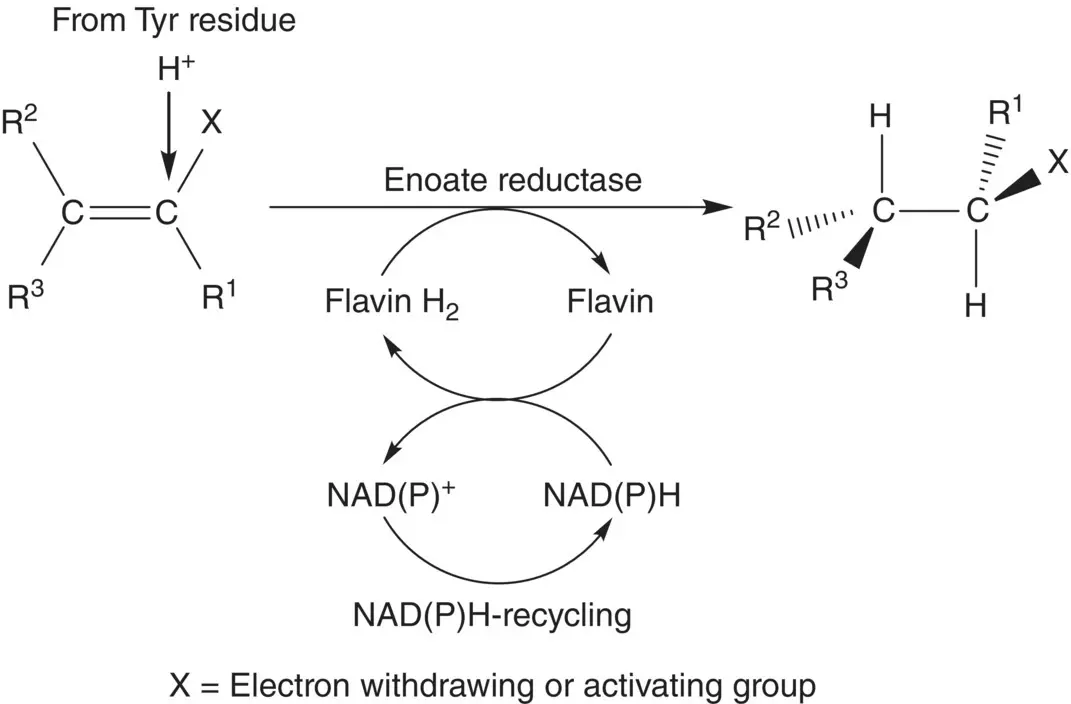
Scheme 2.40 Asymmetric reduction of activated alkene substrates catalyzed by OYE enzymes.
ERs used for asymmetric reduction of electronically activated C=C bonds, with a few exceptions, almost exclusively are isolated from Saccharomyces spp. yeasts, particularly, from the domesticated species S. cerevisiae . However, baker’s yeast just represents a small fraction within the vast yeast kingdom. Recently, Buzzini et al. carried out a screening on 23 so‐called nonconventional yeasts(NCYs) belonging to 21 species of the genera Candida , Cryptococcus , Debaryomyces , Hanseniaspora , Kazachstania , Kluyveromyces , Lindnera , Nakaseomyces , Vanderwaltozyma , and Wickerhamomyces for the whole‐cell bioreduction of α,β‐unsaturated ketones and aldehydes. Results show that extremely high yields (>90%) or even total bioconversion yields for the asymmetric reduction of the conjugated C=C bond of ketoisophorone (KIP) and 2‐methyl‐cyclopentanone (2‐MCPO) were catalyzed by ERs in a few NCYs. The catalytic efficiency of these NCYs declined for aldehydes [( S )‐(−)‐perillaldehyde (( S )‐PA) and α‐methyl‐cinnamaldehyde (MCA)]. The NCY whole cells were in lyophilized form and glucose was used for NAD(P)H cofactor recycling system [180].
Although the use of whole fermenting cells for the asymmetric reduction of activated alkenes can avoid the difficulty of cofactor recycling, the chemoselectivity for C=C was often low by the competing reduction of C=O with the carbonyl reductases in the cell. Therefore, purified ERs accompanied by the necessitating regeneration system for the nicotinamide cofactor [NAD(P)H] were employed to solve the problem of low chemoselectivity. The efficiency of the cofactor recycling is thus an important factor to determine both the yield and selectivity of the asymmetric bioreduction of activated C=C. A highly efficient, inexpensive, and robust ADH‐coupled NADH‐recycling system has been developed recently based on the concurrent oxidation of a sacrificial sec ‐alcohol 2‐propanol to acetone by the solvent‐stable ADH Rhodococcus ruber thereby providing a hydride via NADH to recycle the flavin cofactor of the ene‐reduction catalyzed by ERs [181]. This highly NADH‐recycling system has been applied to a variety of activated alkenes: α‐methylmaleic acid dimethylester, 4‐ketoisophorone, 2‐methylcyclohexanone, 2‐methylcyclopentenone, 2‐methylpent‐2‐enal, and citral. For α‐methylmaleic acid dimethylester, the conversion is quantitatively (>99%) and highly stereoselectively reduced to ( R )‐dimethyl‐α‐methyl‐succinate with an excellent e.e. (>99%) by employing Zymomonas mobilis nicotinamide‐dependent cyclohexenone reductase (NCR) reductase; the conversion is 90% and an e.e. > 99% is obtained by employing B. subtilis YqjM ( Scheme 2.41).
It was reported that indirectly regenerating YqjM or NemA ( N ‐ethylmaleimide reductase from E. coli ) of reduced nicotinamide cofactors can be simplified by an efficient and convenient direct regeneration of catalytically active reduced flavins with the cell‐free bioreductions of activated conjugated C=C double bonds. In this process, reducing equivalents are provided via photocatalytic oxidation of a lot of simple sacrificial electron donors such as phosphite, formate, ethylenediaminetetraacetate (EDTA) [182]. Even when using crude cell extracts, the chemoselectivity of the photoenzymatic reduction was exclusive, only C=C double bond reduction without altering the ketone or aldehyde groups was observed. Up to 65% rates of the NADH‐driven reaction can be got while still preserving enantioselectivity.
Due to the production of 1 : 1 product mixture and unfavorable equilibria, disproportionation reactions generally are rarely used in organic synthesis. However, recent study shows that the nicotinamide‐independent disproportionation of enones can be used as a co‐substrate for the asymmetric bioreduction of activated C=C bonds to eliminate the need for an NADH‐recycling system. In this simplified system, the activated C=C bonds were catalyzed by a single flavoprotein and a sacrificial 2‐enone or 1,4‐dione was used as hydrogen donor for a direct hydrogen transfer without the requirement of nicotinamide cofactor. This strategy has been successively applied for the reduction of C=C bond in citraconic acid dimethylester to produce ( R )‐dimethyl‐2‐methylsuccinate with either 3‐methylcyclohex‐2‐enone or cyclohexane‐1,4‐dione as co‐substrate ( Scheme 2.42) [183]. Other substrates such as 4‐ketoisophorone and N ‐phenyl‐2‐methylmaleimide have also been successfully tested for the applicability to produce ( R )‐levodion and ( R )‐ N ‐phenyl‐2‐methylsuccinimide, respectively.
Читать дальшеИнтервал:
Закладка:
Похожие книги на «Enzyme-Based Organic Synthesis»
Представляем Вашему вниманию похожие книги на «Enzyme-Based Organic Synthesis» списком для выбора. Мы отобрали схожую по названию и смыслу литературу в надежде предоставить читателям больше вариантов отыскать новые, интересные, ещё непрочитанные произведения.
Обсуждение, отзывы о книге «Enzyme-Based Organic Synthesis» и просто собственные мнения читателей. Оставьте ваши комментарии, напишите, что Вы думаете о произведении, его смысле или главных героях. Укажите что конкретно понравилось, а что нет, и почему Вы так считаете.
